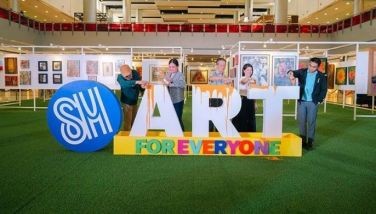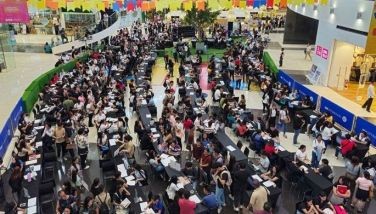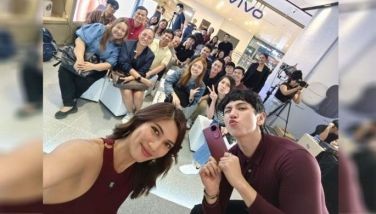The virtue of practical design
MANILA, Philippines - It is commonplace to quote ancient philosophers or historians when lobbying for new laws or bills for democrats and diplomats. In the 21st century, why not re-tweet lines from Steve Jobs, David Adjaye or Marc Newson or simply designers?
Designers by nature have long been creating a utopian way of life on their drawing boards. Whether hit or miss, or a stimulus to spend in a lackluster economy, designers add value to the quality of life, or progress where it must, away from wishful thinking and useless ephemera.
Why do people queue up for the next iPhone 5? Why do we choose one city or an apartment block over the other and why do we still want, say, a piece we stumbled upon on a trip? Designers are, in some ways, philosophers, interested in the proper way to create standard coffee in the morning, to souvenirs that extract the essence of the city, down to a dignified way to operate a watercloset.
Designing (at all scales) is different from styling fashion. The former is concerned with fulfilling a primary function which is necessary (meaning something you can live with) whereas styling, like art, is more akin to decor or ornamentation.
Design and decor exist independently of each other, and sometimes they are in a love-hate relationship.
 Quietly brilliant: HTC One X is an egalitarian Android smartphone tinkering with silent styling.
Quietly brilliant: HTC One X is an egalitarian Android smartphone tinkering with silent styling. Ornament can have no other function than vanity. Sometimes it can border on the retrospective, concerned primarily with taste/bias. A taste for the folkloric, a taste for mid-century classics, a taste for gilt, a taste for pastel, a taste for “humble” natural manufacture, or peacock rattan (that is heavy to transport) — these suggest despotic dictators of exotic taste. Taste can manifest, too, as a particular art movement (when the ideology has become out of context), or craft-based industry which we hold dear like childhood trappings. Ornamentation can also be an after-effect of good design, like a shell that becomes artistic: it grows on you. But so few designs become quietly good first, before being elevated to art.
Quietly Introverted And Good
The smartphone is that tiny piece of design tool we carry around every day. From Palm Pilot to BlackBerry (useful with years of disciplined styling) to HTC One X (finally settling design disputes with Apple) — all are close runners-up, design-wise, to Apple’s iPhone family. Apple snobs may hold their gadgets above all other handsets but HTC One X’s thinness and lightness mask all its snappy multi-tasking functions beyond compare over Apple’s built-in App Store. Simple enough not in terms of lessening “smart features,” but simple as a liberation from the dominance of unnecessary features in what you can expect from a smartphone.
 Machine readable: Every Kindle has a resolute plot accord It also harmoniously makes a library/bookshop a thing of the past.
Machine readable: Every Kindle has a resolute plot accord It also harmoniously makes a library/bookshop a thing of the past. It may be a dying industry to launch a paperback publishing business but the Amazon Kindle 3G with keyboard is quietly assertive in beating physical books (especially hardcover ones), out of print. The Kindle may be successful in sales but design-wise, it takes off from the language of QWERTY keyboards and smartphones. What could be more tactile than seeing the end of a book (as opposed to sliding 1,000 pages) electronically? The Kindle is nerdy. But it works in simplifying a complex networked data-retrieval system, allowing with a second plus: more Ayn Rand to be downloaded.
Not So Quietly Good, It Incapacitates Me
My father’s K-cup coffee machine lacks the comedic grace of an Illy Francis Francis machine. It’s more massive than a cosmopolitan Nespresso machine. It is obstrusive and blinks with a garish blue light. It consistently makes standard coffee, partially acceptable at a low price for the machine — a positive thing, but less desirable for being too robotic. It allows for freedom to choose the cups by flavor, and is playful in that sense. It may not dispense the strong, authentic bean-to-cup brew from a neighborhood machine but for domestic use, it is among the convenient consumer electronic devices one may utilize. Until the next.
Quietly Good & Sustainable
Carpooling is one of those neighborhood associations where great savings and real face-to-face time make for good design. It helps to lessen cars on the streets when biking is confined to gated communities still, and secondary roads. Zipcar makes the carsharing experience more safe with simple steps. With Zipcar, testdriving a Hybrid Prius or even a Mini becomes an alternative to car owning perhaps — if owning a car becomes less a priority these days.
Space Age
One of the wonderfully brilliant public spaces just opened in 2012 is the new BHS Central park. Subtle degradations and discreet park seatings in grass cross over a modest sized open-air amphitheater, a generously-sized, smooth, pigmented concrete sprawl that really promotes a pedestrian culture. In a broader context, it belongs to a sober contemporary language of landscape design. It is function-oriented, rooted in the reality of our need for green zones that anyone can use, and which are neither sci-fi nor totally disconnected from a tropical work climate.
Work-life balance begins from going back to the core of things — and this is why design is a necessary framework, in a larger context.
















